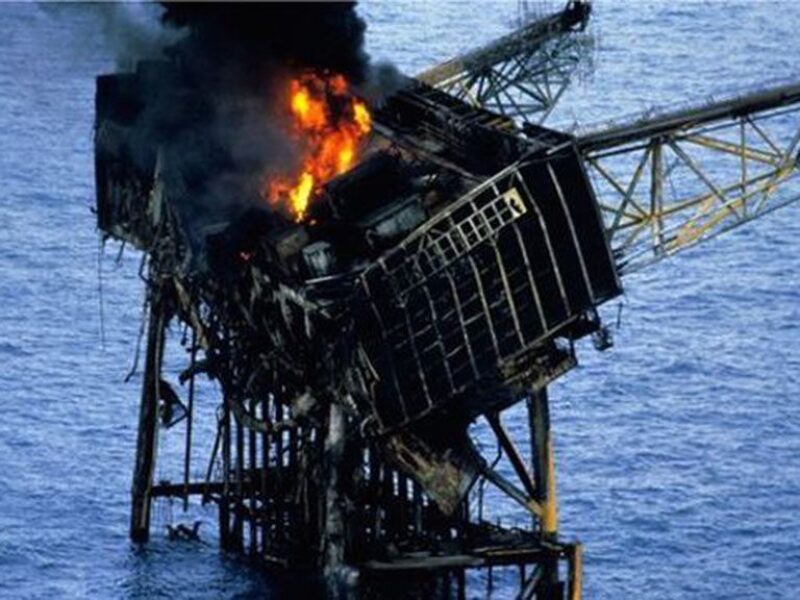I attended the Offshore Technology Conference (OTC) in May in Houston and was impressed by the vibrancy of the global offshore industry. There were more than 104,000 attendees, and the conference rooms and corridors resembled the United Nations at times, with delegates from all over the world interacting to extract value from their visits. The exhibition halls were also impressive with equipment and technology suppliers, major operators, and engineering and support companies swamped by eager engineers of all disciplines wanting to pick up some new piece of information, ask a question, or review a new technology.
More than 650,000 ft2 of exhibition space was crammed full of new and emerging technologies: hardware, software, and equipment and technology you did not even know existed—but now want.
This event is a must for facilities engineers: onshore and offshore. It is a living demonstration of how we deliver energy that the world needs and how innovation and engineering skills extract, produce, and process oil and gas from the most remote and harsh environments on the planet.
OTC was also important because it recognized three key figures who have contributed much to facilities engineering: Dendy Sloan, Jim Brill, and Ken Arnold. This trio was given individual Distinguished Achievement Awards for their technical and leadership contributions to our industry. Sloan and Brill work in the complex and intriguing world of flow assurance—hydrates and multiphase flow, respectively. Arnold is the definitive facilities engineer. He was the first projects, facilities, and construction technical director to serve on the Society of Petroleum Engineers (SPE) board and has dabbled (with great success) in many facilities engineering areas.
I recommend that you visit www.spe.org for a comprehensive review of their contributions, and urge you to read their papers (search on www.onepetro.org) and books.
A Call for PFC Distinguished Lecturers
During OTC, the SPE Projects, Facilities, and Construction (PFC) Advisory Committee met. The committee helps the PFC technical director coordinate all the SPE activities and initiatives that pertain to our discipline. This year, Howard Duhon will assume the directorship, following the stellar and valuable service of John Walsh. Duhon will serve for 3 years, and like most SPE board members, will need your help to be successful (I will write more on this subject later in the year).
The committee discussed a number of topics, including our scramble to identify Distinguished Lecturers, the development of a water handling and management technical section, and plans for the SPE Annual Technical Conference and Exhibition that will be held 30 September–2 October in New Orleans.
The Distinguished Lecturer program is one of SPE’s best. It enables the presentation of informative topics by a subject matter expert to local sections across the globe. The lectures, even those outside your own discipline, are well worth attending.
A question in my mind is: Why can’t we find PFC members interested in embracing the role of a distinguished lecturer? If you are interested in being a distinguished lecturer, or know someone who has an interesting story to tell, please contact your SPE section. I can attest from personal experience that it is one of the most rewarding SPE volunteer activities. How else do you get to visit Great Bend, Kansas; Bogota, Colombia; and Anchorage, Alaska—all in the same month?
Piper Alpha
Disaster—Siren for Process Safety
July 6 was a somber and significant day in the PFC calendar. It marked the 25th anniversary of the Piper Alpha disaster in 1988. It was the worst oil disaster in the North Sea and was a seminal moment in many facilities engineers’ lives, including mine. As a result of the disaster, process safety became a reality to many of us working in the North Sea. In less than 30 minutes, a complete facility was destroyed by a series of explosions and fires, and 167 men lost their lives.
The root cause is believed to be a gas leak on a condensate pump caused by overpressuring a blind flange installed as a temporary measure during the routine maintenance of a pressure safety valve. The pump was never meant to be in service in this mode, but a failure of a permitting system allowed the pump to be started. Gas was released that subsequently exploded and started the horrific chain of events.
The official government investigation, known as the Cullen Inquiry, made more than 100 recommendations and initiated a new safety regime in the North Sea. This event brought about a wholesale change in the way we go about our business, and it began my personal journey in process safety.
I recall vividly the conversations I had that day with colleagues and strangers, as we watched the television coverage of the disaster in the Aberdeen airport. I was en route to an assignment in corporate research and development to facilitate the transfer of the North Sea technologies globally.
I began the day feeling good. I was confident that I could affect the business—after all, North Sea technology was the best, wasn’t it?
I boarded the airplane somewhat bewildered, but with a sense of vulnerability and an understanding that maybe we were not as smart as we thought we were. Over time, I began to appreciate that process safety is a core attribute of a good facilities engineer and that it is not purely a health, safety, and environment function. It is a collaborative responsibility to design, operate, and maintain oil and gas processing plants to the highest possible standards. I also realized that I had a lot to learn.
I encourage you to take a look at this catastrophe and see what you can take away from the events, the aftermath, and the subsequent changes in our business. We may not all have day-to-day responsibilities for process safety, but as facilities engineers, we play a key role in the successful and safe production of hydrocarbon resources.


